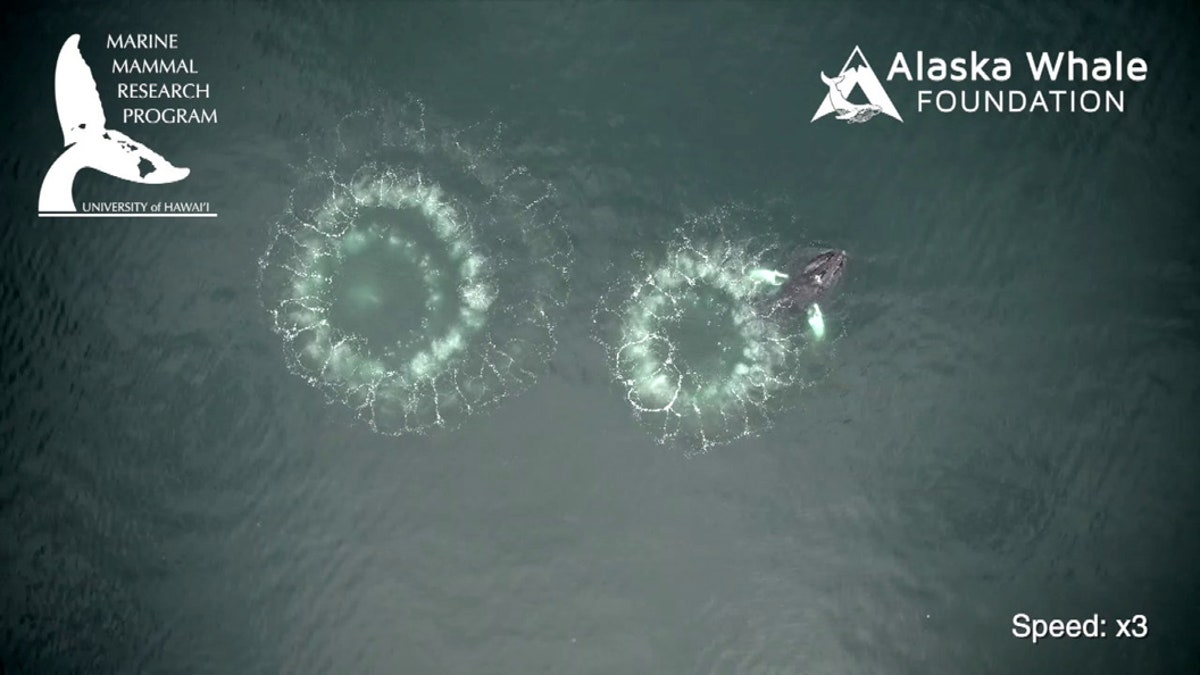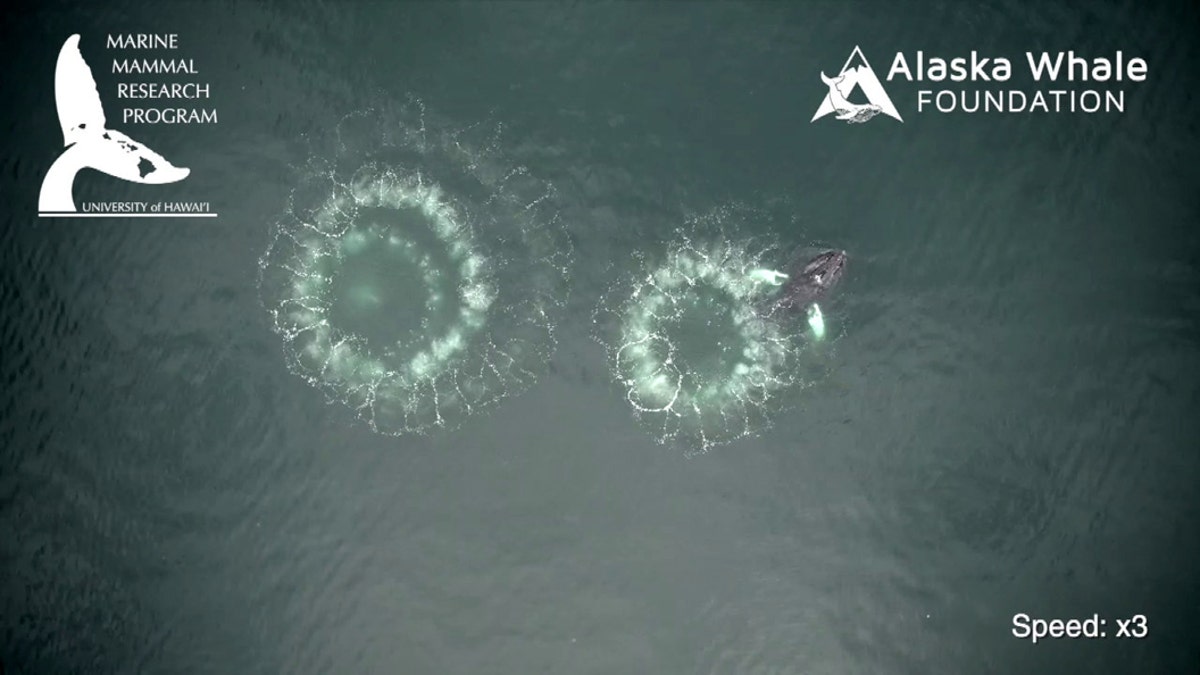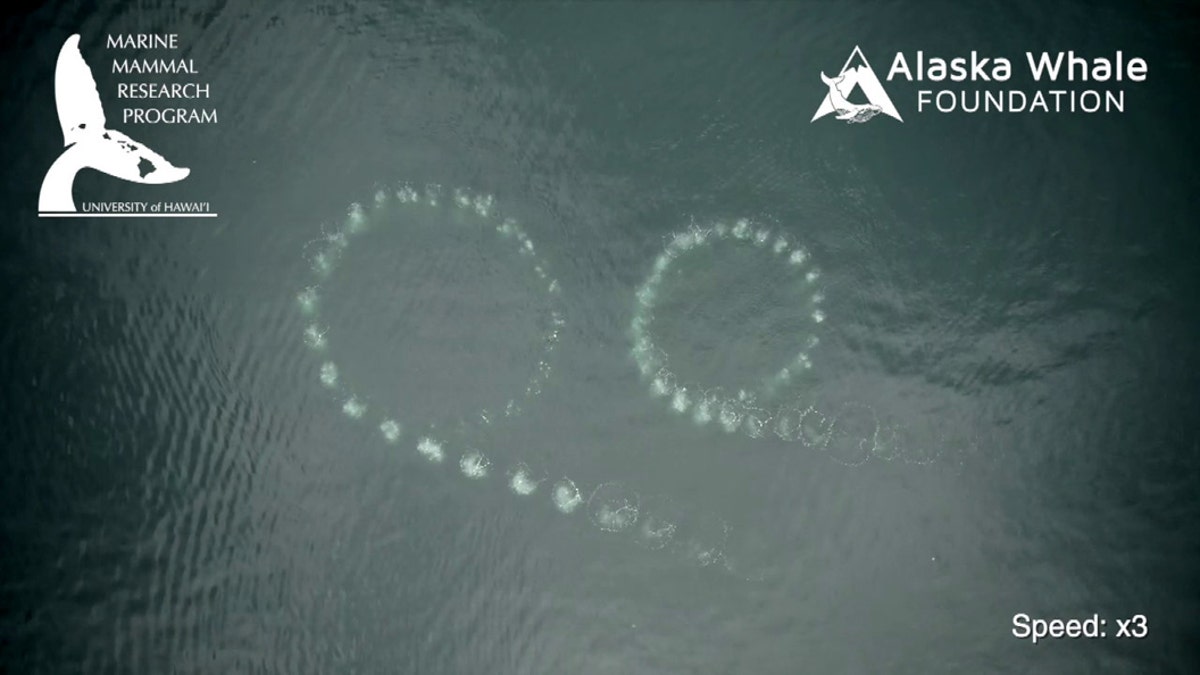Fox News Flash top headlines for Oct. 14
Fox News Flash top headlines for Oct. 14 are here. Check out what's clicking on Foxnews.com
A remarkable set of images show humpback whales near Alaska using an unconventional method to catch their dinner — blowing bubbles.
Researchers from the University of Hawaii were able to capture the spectacular images using a drone while studying the massive mammals near Alaska.
The technique, known as bubble-net feeding, occurs when a pod of whales near the surface of the water rounds up their prey (usually fish or krill) inside the circle of bubbles they've created using their blowholes. The bubbles may stun the prey, which are then consumed by the whales.

Without a rod or a net, humpback whales go to extraordinary lengths to catch fish - by using the bubbles from their blowholes. A team of researchers from the University of Hawaii captured this spectacular footage of humpbacks whales using a technique called bubble-net fishing in the waters near Alaska. (Credit: SWNS)
NEW SPECIES OF WHALE DISCOVERED ON THE JAPANESE COAST
The researchers also posted a video to their YouTube page, showing off the remarkable event.
“The footage is rather groundbreaking,” said Lars Bejder, director of the UH Mānoa Marine Mammal Research Program, in a statement. “We’re observing how these animals are manipulating their prey and preparing the prey for capture. It is allowing us to gain new insights that we really haven’t been able to do before.”
In addition to using drones to capture the images, the researchers also put cameras and accelerometers on the whales via suction cups to get video and data from a first-hand account.
That data gave the researchers fresh insights into how bubble-net feeding is done and how often they do it before they eventually migrate down to Hawaii for breeding.

Bubble-net feeding is when a group of whales near the ocean surface rounds up fish or krill inside a circle of bubbles they’ve created by exhaling from their blowholes. (Credit: SWNS)
“We have two angles. The drone’s perspective is showing us these bubble nets and how the bubbles are starting to come to the surface and how the animals come up through the bubble net as they surface, while the cameras on the whales are showing us the animal’s perspective,” Bejder added. “So overlaying these two data sets is quite exciting.”
RARE WHALE NEAR ALASKA RECORDED SINGING FOR FIRST TIME

As the whales rise from the depths towards the surface, the fish are trapped in the bubble net, allowing the huge humpbacks to swoop in and feast. (Credit: SWNS)
Bejder estimates that approximately 3,000 whales come to Alaska for the summer feeding season. He added that up to 10,000 whales will make the 3,000-mile trek to Hawaii to breed during the winter months, not stopping for food until they reach their destination.

